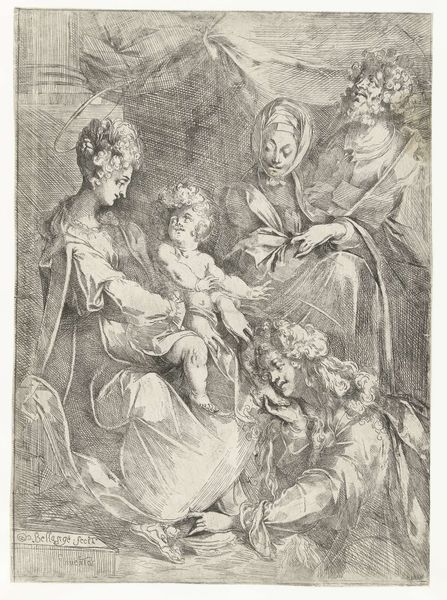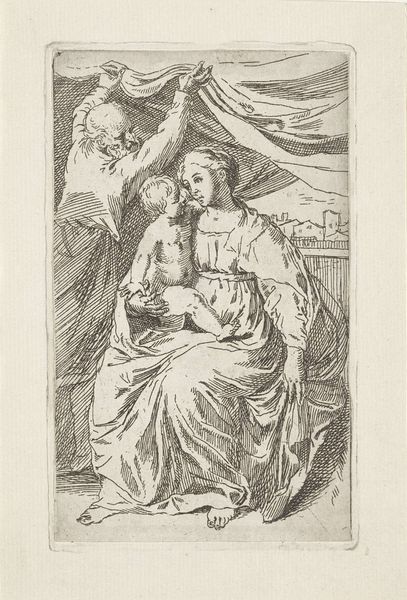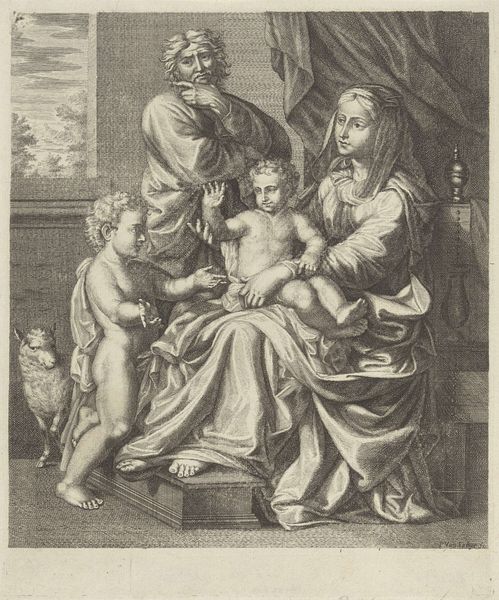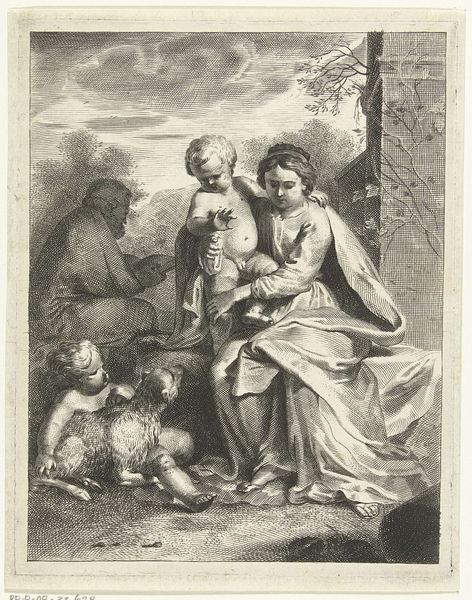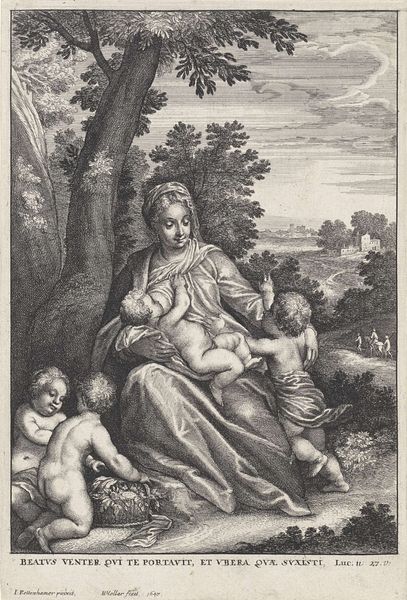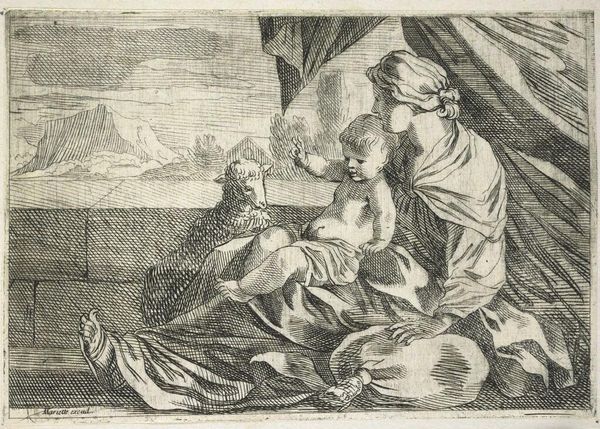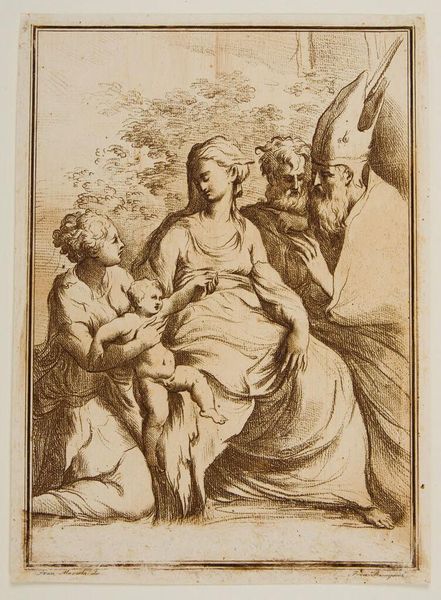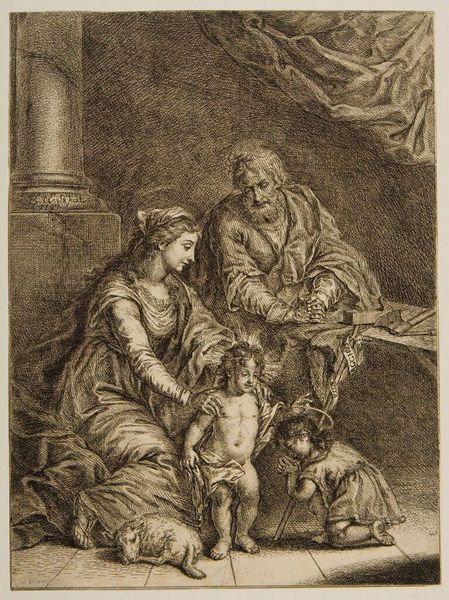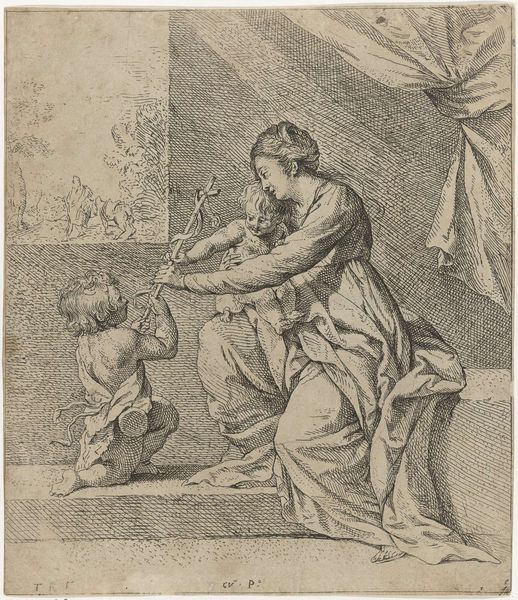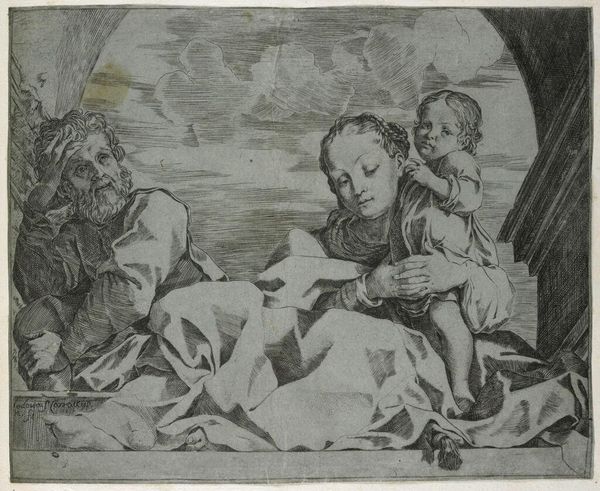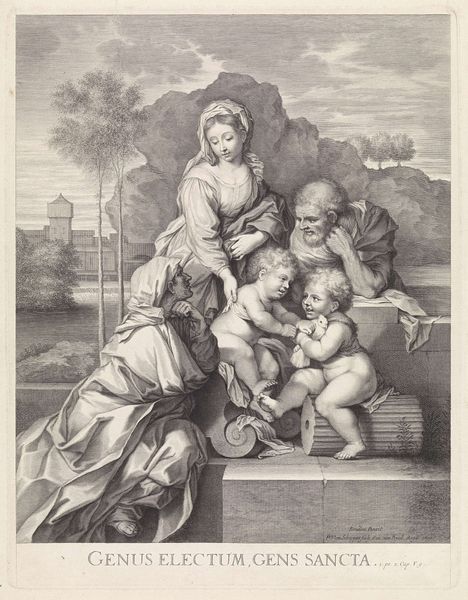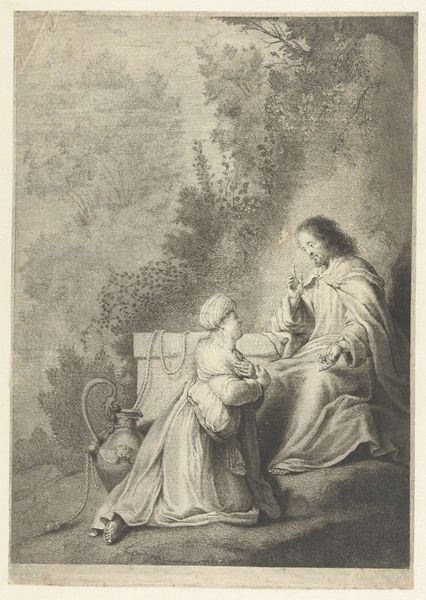
Dimensions: height 80 mm, width 146 mm
Copyright: Rijks Museum: Open Domain
Curator: This print, attributed to Giovanni Cattini, is entitled "Vrouw met vier kinderen" - "Woman with Four Children" in English - and it dates from the late 18th century. I find its soft textures quite compelling. Editor: It's charming, certainly, although the idealized image of motherhood seems quite distant from reality. Let’s delve into how this Baroque engraving sheds light on its social context and intended audience. Curator: Well, let's consider Cattini’s method, though. Look at how the lines build to form the volume of her garments and the softness of her flesh, particularly her bare foot. And the cross-hatching – think about the labor, the repetitive motions involved in creating those textures! Editor: That precise, almost mechanical labor was part of the burgeoning print industry. Prints made art accessible and portable for the emerging middle class, shifting the consumption of images beyond the elite. The idealization, I think, is central to understanding how images of the family were being circulated and consumed at the time. This nurturing mother becomes a moral touchstone. Curator: It does reek of idyllic domesticity. But it's fascinating to me how the texture transforms into the content; you get so absorbed in the quality of line that the heavy-handed message becomes secondary. And let’s not dismiss the artistry in replicating and varying textures – from the fabric draped on the left, to the swirling clouds and, of course, the very vulnerable skin of the children. Editor: True, the material effect of the print invites intimacy. And, in turn, one must remember this intimacy was often commercially manufactured for specific purposes – like reaffirming gender roles and expectations, especially around childcare. How these artworks participated in, and sometimes subtly subverted, prevailing ideologies of the era is crucial. Curator: I suppose analyzing those power dynamics within print culture adds another layer to the viewing experience. It definitely moves me to consider these prints, not just as passive representations but as active participants in social constructions. Editor: Precisely! Context always shifts perception, and with that added awareness, it's a less saccharine image.
Comments
No comments
Be the first to comment and join the conversation on the ultimate creative platform.
